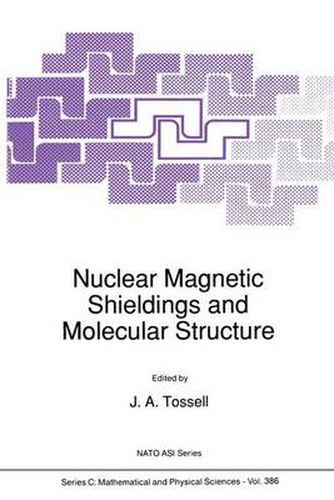Readings Newsletter
Become a Readings Member to make your shopping experience even easier.
Sign in or sign up for free!
You’re not far away from qualifying for FREE standard shipping within Australia
You’ve qualified for FREE standard shipping within Australia
The cart is loading…






This title is printed to order. This book may have been self-published. If so, we cannot guarantee the quality of the content. In the main most books will have gone through the editing process however some may not. We therefore suggest that you be aware of this before ordering this book. If in doubt check either the author or publisher’s details as we are unable to accept any returns unless they are faulty. Please contact us if you have any questions.
Modern approaches to the theoretical computation and experimental determination of NMR shielding tensors are described in twenty-nine papers based on lectures presented at the NATO ARW. All of the most popular computational methods are reviewed and recent progress is described in their application to chemical, biochemical, geochemical and materials science problems. Experimental studies on NMR shieldings in gases, liquids and solids are also included, with special emphasis placed upon the relationship between NMR shielding and geometric structure and upon tests of the accuracy of the various computational methods. Qualitative MO schemes and semiempirical approaches are also considered in light of the computational results. This is a valuable book for anyone interested in how the NMR shielding tensor can be used to determine the geometric and electronic structures of molecules and solids. (abstract) Modern methods for computing and measuring nuclear magnetic resonance shielding tensors are described in papers by a great number of leaders in the field. The most popular methods for quantum mechanically calculating NMR shielding tensors are reviewed and many applications of these methods are described to problems in chemistry, biochemistry, geochemistry and materials science. The focus of the papers is on the relationship of the NMR shielding tensor to the geometric and electronic structure of molecules or solids.
$9.00 standard shipping within Australia
FREE standard shipping within Australia for orders over $100.00
Express & International shipping calculated at checkout
This title is printed to order. This book may have been self-published. If so, we cannot guarantee the quality of the content. In the main most books will have gone through the editing process however some may not. We therefore suggest that you be aware of this before ordering this book. If in doubt check either the author or publisher’s details as we are unable to accept any returns unless they are faulty. Please contact us if you have any questions.
Modern approaches to the theoretical computation and experimental determination of NMR shielding tensors are described in twenty-nine papers based on lectures presented at the NATO ARW. All of the most popular computational methods are reviewed and recent progress is described in their application to chemical, biochemical, geochemical and materials science problems. Experimental studies on NMR shieldings in gases, liquids and solids are also included, with special emphasis placed upon the relationship between NMR shielding and geometric structure and upon tests of the accuracy of the various computational methods. Qualitative MO schemes and semiempirical approaches are also considered in light of the computational results. This is a valuable book for anyone interested in how the NMR shielding tensor can be used to determine the geometric and electronic structures of molecules and solids. (abstract) Modern methods for computing and measuring nuclear magnetic resonance shielding tensors are described in papers by a great number of leaders in the field. The most popular methods for quantum mechanically calculating NMR shielding tensors are reviewed and many applications of these methods are described to problems in chemistry, biochemistry, geochemistry and materials science. The focus of the papers is on the relationship of the NMR shielding tensor to the geometric and electronic structure of molecules or solids.